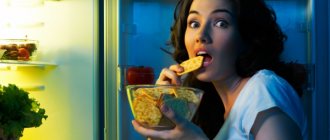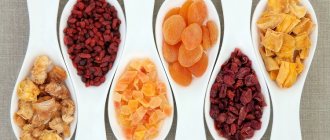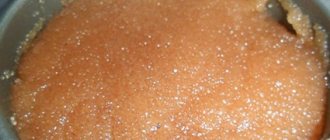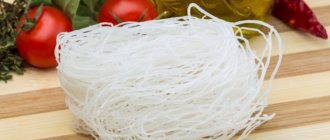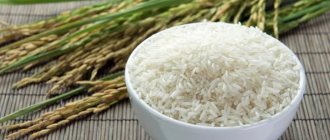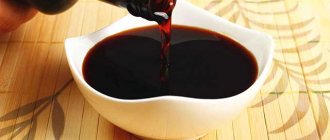Lose weight up to 4 kg in 6 days. The average daily calorie content is 900 Kcal.
Since ancient times, people have been eating the gifts of nature - not only plant and animal food, but also the inhabitants of lakes, rivers, seas and oceans. And today the list of healthy and tasty food is rightfully headed by seafood.
For information, all edible inhabitants of the world's oceans, except fish, are considered seafood. Their typical representatives on our table are shrimp, squid, crayfish, crabs, lobsters (lobsters), octopus, lobsters, oysters, mussels, rapana, scallops, kelp. All seafood is a real storehouse of protein, iodine, easily digestible by our body, many vitamins and microelements, and polyunsaturated fatty acids.
Seafood, along with its exquisite taste, helps us normalize metabolism, increase vitality, and prevent diseases of the musculoskeletal system. By the way, scientific research has proven that the longevity and beautiful appearance of the Japanese is the result of the abundant presence of ocean gifts in their diet.
In some seafood diets, their developers include fish in the menu. Today we will introduce you to some weight loss techniques based on the consumption of seafood. Choose any diet for yourself. The diet menu will differ not only in taste, but also in benefits.
Seafood Diet Requirements
A seafood mono-diet is the shortest option for losing weight. This diet course lasts 2-4 days, weight loss is 1-2 kilograms. Prolonging the diet is highly undesirable. According to the rules of the mono-diet, you can only eat seafood and fish in small portions (about 250 g) three times a day. For dinner, you can slightly reduce the serving size (up to 150 g) and drink a glass of low-fat kefir. An afternoon snack consisting of a glass of this fermented milk drink is also provided. Eating fruits, vegetables and other foods is prohibited. You can use freshly squeezed lemon juice to season your dishes. Choose lean fish (for example, cod, pollock, hake, crucian carp). Drinking diet - still water, green tea, black coffee, herbal infusions. Sugar is prohibited.
Seafood diet
, the key dish of which is
seafood soup
, lasts 6 days. Weight loss - 3-4 kg. In addition to seafood soup, you are allowed to eat vegetables, fruits, hard cheese, freshly squeezed juice, bran bread, unsweetened cereal, and yogurt. It is recommended to have four daily meals. When preparing dishes, you cannot use fats and oils, but you can add lemon juice to them. Salt, sugar in any form, and alcohol are strictly contraindicated. How to make soup? You can find many recipes for dietary seafood soup on the Internet. We won’t describe each of them now; it will be easier for you to choose the option you like for preparing the soup. Imagine, use different ingredients every day, and then such a soup will become part of your diet not only for the duration of the diet, but will become a favorite dish for a long time.
squid diet has been developed for squid lovers
. Weight loss on it, on average, is 1 kg per day. All seven days the same three meals a day are provided, including squid, non-starchy vegetables, carrot and apple juice, apples, low-fat cheese. It is recommended to avoid snacks. You can drink tea, coffee, but without adding sugar.
Principles of the Mediterranean Diet
The most important principle of the Mediterranean diet is strict adherence to the balance of food components. In such a diet, carbohydrates account for about 60%, fats – 30%, and only 10% of the total diet consists of proteins.
The carbohydrate component comes primarily from vegetables and fruits, which are consumed fresh. For residents of the Mediterranean, where the sun shines most of the time and the air temperature is above 0 degrees, this is not particularly difficult. A much smaller part of this component of the diet belongs to pasta and bread. But here too there is a clear boundary. To make pasta, only durum wheat should be used, and bread should only be made from whole grains.
Olive oil serves as healthy fats - 30% of the entire diet. Ideally, olive oil should be cold pressed.
And only in very small quantities (10%) are low-fat fish, various seafood, and legumes consumed. It is from these products that the body obtains the proteins it needs. They try not to eat eggs at all, or no more than 3-4 eggs per week. Any animal meat is treated with great restraint.
There are a number of other principles of the Mediterranean diet that allow you to achieve amazing results:
- Fractional power system. Eat at least 4 times a day. Moreover, 3 meals should be more saturated.
- Any meal should include vegetables and fresh herbs.
- When choosing between meat and fish, preference is given to fish and various seafood. They predominate in this type of diet.
- It is recommended to eat lean meat and poultry; it is recommended to completely exclude red meat with fat.
- Dairy products include low-fat cottage cheese, cheese, and a variety of yoghurts.
- Olive oil is consumed as the main source of healthy fats.
- They try to cook food either by steaming, baking or grilling.
- A wide variety of legumes are eaten (from peas to lentils, for every taste).
- You need to drink at least 1.5 liters of water per day.
- They try to eliminate salt from the diet, replacing it with various herbs and spices.
- Similarly, sugar is excluded, giving preference to natural honey.
- Bread is consumed in small quantities, and only whole grain. Ideal if it is homemade baked goods.
- Pasta is preferable from durum wheat.
- As a dessert, fruits that are ripening at the moment are used.
- A very important component is constant physical activity, a good positive mood and a smile.
It is necessary to say in more detail about the following principle. This is alcohol consumption. But, naturally, this is not any alcohol, but only dry red grape wine and in small quantities (for men - 200 ml per day, and for women - 150 ml). Medicine has long argued that drinking natural dry wine improves the functioning of the immune system, strengthens the body and prevents the development of cancer processes due to the antioxidant content in wine. But, naturally, the wine should be natural and consumed in limited quantities.
Seafood diet menu
Example of a seafood mono-diet for 4 days
Breakfast: 250 g of boiled shrimp, seasoned with lemon juice. Lunch: salad of 250 g of seafood (rapana, mussels, shrimp, kelp), seasoned with lemon juice. Afternoon snack: a glass of kefir. Dinner: 150 g of boiled lean fish and a glass of kefir.
Example of a seafood diet for 6 days
Breakfast: a couple of toasts from bran bread; a portion of seaweed salad; a cup of green tea. Lunch: bowl of seafood soup; salad from any vegetables; apple. Afternoon snack: freshly squeezed fruit juice; grain bread; banana; low-fat yogurt. Dinner: steamed fish cutlet; 2 tomatoes; a pear or a couple of plums.
Example of a squid diet for 7 days
Breakfast: salad (we use cucumbers, tomatoes, squid); freshly squeezed carrot juice. Lunch: boiled squid; two fresh or baked apples. Dinner: boiled squid; a slice of low-fat cheese; Apple juice.
Varieties and calorie content of seafood
The term seafood refers to all seafood, except fish, which are separated into a separate group. Despite the different classifications, the seafood diet includes all fish except river fish.
- Fish. One of the most numerous groups of marine life, which is an integral part of the human diet. Eating fish reduces the risk of developing cardiovascular diseases several times and strengthens the immune system. However, not all types are recommended for weight loss. The following have low nutritional value: tuna, trout, mackerel, halibut and bream. Depending on the type, calorie content varies from 80 to 280 Kcal per 100 g. Almost all types of fish contain a minimal amount of carbohydrates, but a high percentage of protein.
- Mussels, shrimp, sea cocktail. These types of seafood are distinguished by their high content of vitamins B, C, E and D, as well as substances that improve digestion. This category of seafood products is ideal for dietary and health nutrition. The calorie content of mussels is: 70 Kcal per 100 grams, shrimp and squid: 75 Kcal.
- Algae and sea grass. Sea kale is the most useful and valuable seafood, which is recommended not only for weight loss, but is also included in a healthy diet. Seaweed contains a record amount of useful substances that ensure the normal functioning of internal organs and all the most important systems of the body. It contains a minimal amount of calories - 100 grams of fresh product contains only 30 Kcal.
Look at the same topic: Nutrition system against extra pounds - zucchini diet
Contraindications for a seafood diet
- A seafood diet is contraindicated in case of individual intolerance to fish and seafood, or in cases of disruption of the endocrine system.
- You should not go on such a diet during pregnancy, during breastfeeding, children and the elderly, during exacerbation of chronic diseases and in case of any serious health problems.
- Of course, you don’t need to turn to this method of weight loss if you simply don’t like the products offered by the diet.
- Before starting a diet, it is highly advisable to consult a doctor.
Advantages of a seafood diet
- The seafood diet is notable for the fact that, in addition to quickly adjusting your figure, it has a healing effect on the body.
- Proteins, vitamins, amino acids and microelements contained in seafood are of great value. Biologically active substances in seafood prevent the development of oncology, normalize metabolism, and strengthen the immune system.
- We absorb protein from seafood easier and better than protein from animal and poultry meat.
- Seafood contains a lot of polyunsaturated fatty acids, which improve brain functioning and lower bad cholesterol levels. In addition, the introduction of sea inhabitants into the diet has a positive effect on the functioning of the thyroid gland, reduces the chances of encountering various types of allergies, improves the functioning of the gastrointestinal tract, slows down aging and has a general strengthening effect on the body.
- In addition, seafood is a strong natural aphrodisiac that increases libido.
- If you love seafood, you will surely enjoy eating it every day. And by eating deliciously (even if not very plentifully), there will be no desire to break off the diet, and you will bring your goal to completion.
The essence and features of nutrition
A distinctive feature of the food is the unregulated menu. A person who is losing weight can make a meal plan for the day himself, coming up with new options for preparing dishes. At the same time, you need to eat not only seafood, but also other foods, which include fruits, dairy products, cereals and low-calorie vegetables. They will help the body maintain normal functioning by supplying it with essential vitamins and minerals. A balanced diet allows you to eliminate the occurrence of breakdowns and undergo a weight loss course.
To increase the effect of changing your diet, you must follow the recommendations:
- They eat 5-6 times a day and in small quantities. This technique speeds up the digestion of food and does not overload the digestive organs, so fat deposits do not form. The advantage of fractional meals is the absence of hunger, since a short period of time passes between meals.
- Foods that contain a high level of carbohydrates must be consumed in the first half of the day so that the body is charged with energy for the whole day. At the same time, complex carbohydrates are chosen that take a long time to digest, allowing glucose to come out gradually, without forming excess and without turning into fat deposits.
- If a long-term diet is chosen, then the diet is supplemented with lean beef and veal, as well as skinless chicken.
- When preparing dishes, salt and sugar are not used, which increase appetite and cause the formation of fatty layers and swelling. To improve the taste of fish, you can use lemon juice or herbal spices, and porridges can be supplemented with berries and fruits.
- Smoked meats, pickled products, salty and fatty foods are removed from the diet. Prohibited foods include processed foods and alcoholic beverages.
- Every day you need to drink at least 1 glass of low-fat fermented milk product, including yogurt, kefir and fermented baked milk. They improve the functioning of the gastrointestinal tract and replace the second dinner.
- An important step is maintaining a drinking regime. Every day you need to drink at least 1.5 liters of clean still water. It allows you to normalize fluid balance, as it is eliminated due to the lack of salt in food. A couple of glasses of water are often replaced with green tea without sugar or other additives.
- Vegetable salads are seasoned not with sunflower oil, but with coconut, olive or linseed oil. Animal fats, including creamy products, are prohibited.
Be careful when eating rolls and sushi with a low calorie content, since raw fish may contain parasites.
Disadvantages of a seafood diet
- You still can’t lose significant weight by eating seafood, because following a diet for a long time is contraindicated.
- We also note that seafood cannot boast of being cheap, so this diet is not suitable for people on a limited budget.
- It is important to be very careful when choosing seafood. They may contain pathogenic bacteria, heavy metals, arsenic, and mercury. Remember the main rules that will protect you from dangers: freshness of seafood and mandatory heat treatment.
- Eating seafood may cause allergies, manifested by rashes and itching. There are also more severe cases of the body’s reaction to seafood, accompanied by swelling of the larynx, headaches and dizziness, even loss of consciousness. Remember about this risk and, if there was at least some hint from the body of not accepting such products, you should not eat them.
Recipes for dietary seafood dishes
The process of preparing seafood itself is quite easy and quick, but it involves some tricks that will help give the dishes an attractive appearance and pleasant taste.
For example, the easiest way to prepare multi-component dietary recipes is from a sea cocktail, which is usually sold frozen and includes: meat of shrimp, mussels, octopus and squid (meat of cuttlefish, oysters, crabs, etc. may also be present).
All recipes for dietary shrimp dishes will be much more appetizing if they are minimally heat treated and then quickly cooled. Fresh shrimp in a medium-sized shell should be cooked for 3-4 minutes, and peeled ones for only 2-3 minutes. It is imperative to remove the intestinal vein from large shrimp, otherwise their meat will acquire an unpleasant aftertaste.
Mussel meat also does not require long cooking and is fully cooked in boiling water within 2-3 minutes. The best seasoning for mussels, which fully reveals their taste, is lemon juice.
When preparing octopuses, it is necessary to take into account the significant loss in weight of this seafood, since during the boiling process their meat becomes almost three times less. To preserve the specific taste and softness, octopus meat must be allowed to cool in the water that was used to prepare it.
Dietary recipes for preparing squid most often begin with a 5-minute heat treatment of their cleaned carcasses in water heated to 80°C. This process prevents the squid meat from turning a purple-pinkish color.
Below we will consider just some popular recipes for dietary dishes from squid, shellfish, shrimp and other seafood that you can use to diversify your usual daily diet for the benefit of your health and weight.
First of all, take water into a small saucepan, put it on the fire, bring to a boil and put in it a bay leaf, a pinch of salt and other spices to taste. Add frozen seafood cocktail to water and squeeze half a lemon into it.
In a separate bowl, boil the cream, remove it from the heat, add grated processed cheese and beat the mixture with a blender.
Wash and peel the bell peppers and green onions, cut them into small pieces and fry over medium heat in a frying pan with preheated butter.
Drain the cooked seafood in a colander and place it in a saucepan with the cream and cheese mixture, then pour the remaining seafood broth into it in a thin stream. Add the fried vegetables and cook everything for 2-3 minutes. At the end of cooking, add dried herbs to the soup.
Wash the lettuce leaves, tear them into large pieces and place in a salad bowl. Cut the red onion into thin half rings and add to the salad. Peel the bell pepper and cut it into thin strips. Peel the cucumber, cut it into thin half rings and place it together with the pepper in a salad bowl.
In a small bowl, stir together olive oil, grain mustard, lemon juice, honey and salt. Pour this dressing into a vegetable salad.
Cut all seafood into approximately equal pieces. Heat a little oil in a frying pan, place all the seafood meat on it, add a little salt and fry over medium heat for 2 minutes.
Prepare a beautiful serving plate. Cut the cherry tomatoes in half and place along the edges. Place the dressed salad and halved asparagus in the center of the plate. Carefully place the fried seafood on top.
Wash the squid carcasses, remove all the cartilage from them and remove the skin by pouring boiling water over them.
MORE ABOUT: Keto diet menu for a month
Cut off the tails of the squid, chop them finely and mix with the vegetable mixture. Add salt and pepper to the filling.
Stuff the squid carcasses with the prepared filling.
Pour water into the multicooker bowl, place a steaming plate on top and place the stuffed squid on it.
For a multicooker, select the “Steam” mode.
Shrimp with vegetables
Thoroughly peel and rinse all vegetables under running water and cut them into strips of approximately the same medium size.
Peel the shrimp, removing their shells, intestinal veins and limbs (you should be left with clean meat).
Place the frying pan over medium heat, pour a little olive oil into it, bring it to a boil and pour in the entire vegetable mixture, which should be simmered for 5 minutes, stirring constantly.
Add the hot-sweet sauce to the vegetables, stir and simmer the resulting mixture for another 5 minutes. After this time, pour the shrimp meat into the vegetables and sauce and, stirring continuously, continue cooking for another 2-3 minutes.
Rinse the caviar thoroughly and remove all foreign matter from it. Add a chicken egg, a little salt to the caviar and mix thoroughly, then gradually adding flour, beat all ingredients with a fork until smooth.
Heat the olive oil in a frying pan and, spooning the resulting mixture with a tablespoon, fry the pancakes on both sides until golden brown.
Transfer the finished pancakes to a clean paper towel to absorb excess oil.
